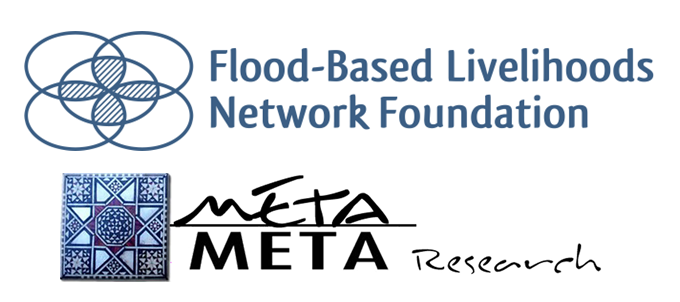Dear Spate friends,
We have a couple of things we would like to inform you about!
1. New country networks
First of all, we are excited that we are starting with country networks in five more countries: Afghanistan, Kenya, Malawi, Myanmar and Somalia. In the ongoing Leadership, Course plans have been made on starting in these new countries and host organizations have been identified.
2. Leadership Course.
The Leadership Course is taking place from February 29 to March 14 in Nairobi Kenya and is supported by the IFAD/EU funded “From Africa to Asia and Back Again” program. The course brings together program leaders from nine countries and will consist of a week-long visit to spate systems in Tanzania too.
3. Farmer exchange in Pakistan
As the Spate Irrigation Network moves more towards becoming a network of farmer organizations, a farmer network exchange took place in Taunsa, Pakistan. The first of its kind. Farmers from the network in DI Khan, DG Khan and Balochistan met – all in all 57 farmers. Visits were made to the different spate sites and discussions were held on water distribution and conflicts; how to urge the government to pay more attention to the areas; how to multiply seeds and how to transform the farmer networks into registered associations. Farmers exchanged seeds from their respective areas: red kidney bean; mung bean; moth bean. Moth bean for instance disappeared from DG Khan but farmers are keen to reintroduce this pulse yet had no access to seeds, which are still common in Balochistan.

4. Intensive advocacy activities in Sindh, Pakistan
In the Efficient Management of Spate Water project, RDF, Oxfam Novib and Spate Irrigation network Pakistan promoted efficient and productive use of spate water to strengthen livelihoods and support economic growth in selected areas of Sindh, by analysing and documenting practices and benefits of structured spate and direct spate usage by the farmers. The first national meeting on Spate Irrigation was held in Tando Jam was organized and a joint declaration was prepared: the Tando Jam Declaration, advocating for better and appropriate programs in the ephemeral stream. A barani farmer network was established and sever trials were started. Please find below the link to the video on spate irrigation potential and challenges in Sindh: http://www.thewaterchannel.tv/media-gallery/6291-spate-irrigation-in-sindh.
5. Research in spate water conflicts Afghanistan
Research is going to start on settling water conflicts and the scope for codifying spate water rights in Afghanistan – undertaken with the Kabul University. The research will focus on the Nimroz Province, and will start once security issues are resolved.
6. The Jessours of Tunisia
Jessour of Tunesia are a water harvesting method within the category of macro‐catchment and floodwater methods. Wall/dyke structures are built across relatively steep wadis in southern Tunisia and function as barriers that hold back sediment and runoff water. Jessours are mostly in use in semi‐arid to arid areas with average rainfall of around 100 mm per year, by means of jessours it is possible to reach 400‐500 mm of rainfall per year. A special feature – worth reconsidering is the use of planting pits for olive trees.

Please find the video link of Jessours applied in Tunisia under the WAHARA project: http://thewaterchannel.tv/media-gallery/6303-wahara-project-jessour-water-harvesting-structures-applied-in-tunisia
For more information on the WAHARA project, see www.wahara.eu.
7. News from “Harnessing floods to enhance livelihood and ecosystem services” project
Mekelle University, Ethiopia has collected data for the economic valuation of floods (land use map, soil map, rainfall data). The data will be used to develop investment criteria and scenarios of upper-lower catchment interactions and their impact on ecosystem services and socio-economic characteristics on the affected communities. In the Raya Valley of Ethiopia, an InVEST model was used to evaluate the sediment retained, sediment exported and the potential soil loss of Guguf and Oda sub-catchments.
Furthermore results from fieldwork and farmer group discussions in Raya valley reveals that instead of upstream interventions undermine the availability of (flood)water downstream, it has significant positive effects on groundwater availability, microclimate and reduces the frequency of destructive floods.
A video has been made about the progress of the Harnessing floods project in the Gash Basin of Sudan. Please find below the link: http://www.thewaterchannel.tv/media-gallery/6288-harnessing-floods-to-enhance-livelihood-and-ecosystem-services-in-the-gash-river-basin.
Also, read a blog on how farmer predicts the rain season:https://wle.cgiar.org/thrive/2016/02/17/reading-rain
8. Plantations of Acacia Nilotica
Acacia nilotica locally known as Babul or Kikar is an indigenous tree of southern Pakistan. It is known as the “golden tree” of Sindh province of Pakistan as it is extensively grown in the forests and farmlands. Babul is also the main species of riverine forests and irrigated plantations of Sindh. It is also a main component of agroforestry in Sindh on private farmlands lands by the farmers grown as woodlots, tree lines and scattered trees. It is a multiple-use species as it performs a wide variety of uses such as fuelwood, constructional timber, farm implements, furniture and pit props in coal mining industries. The babul trees are regreening the desert. A manual on it is available in the library of www.spate-irrigation.org (http://spate-irrigation.org/wp-content/uploads/2016/03/160303_Hurri-Cultivation-An-Agroforestry-System-in-Sindh-Pakistan.pdf).
Wishing you the best,
Abraham, Frank, Matthijs and Linda

